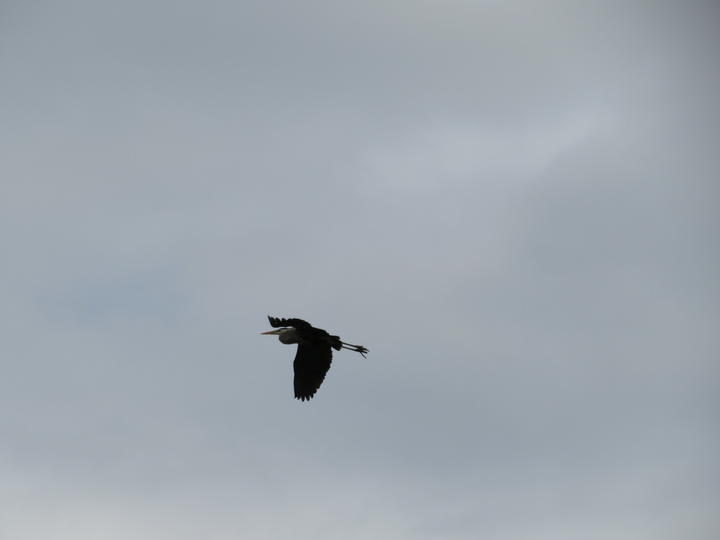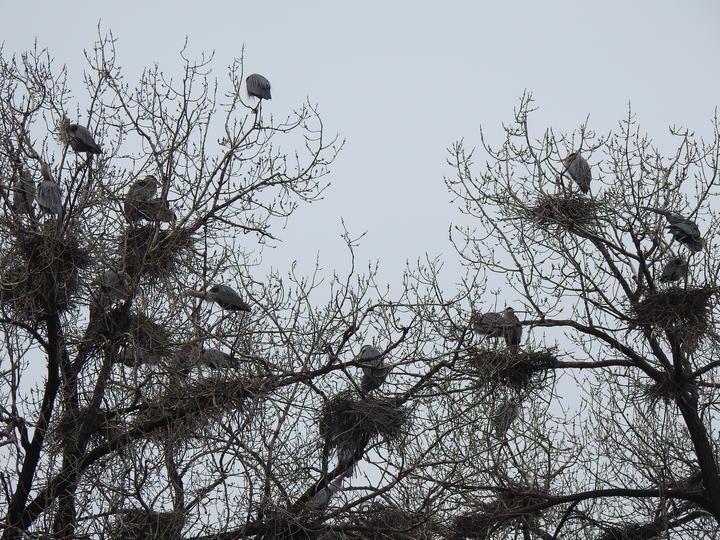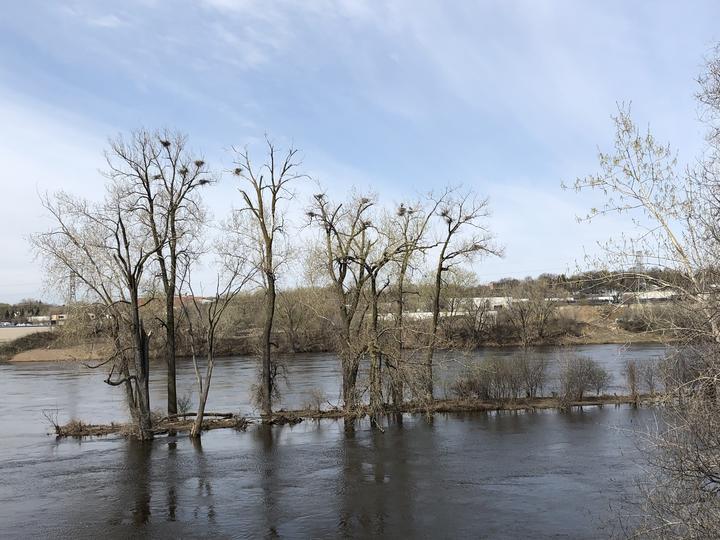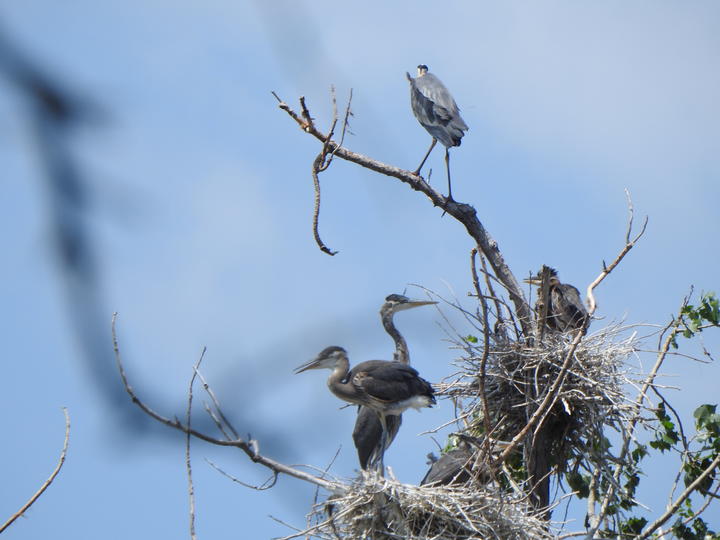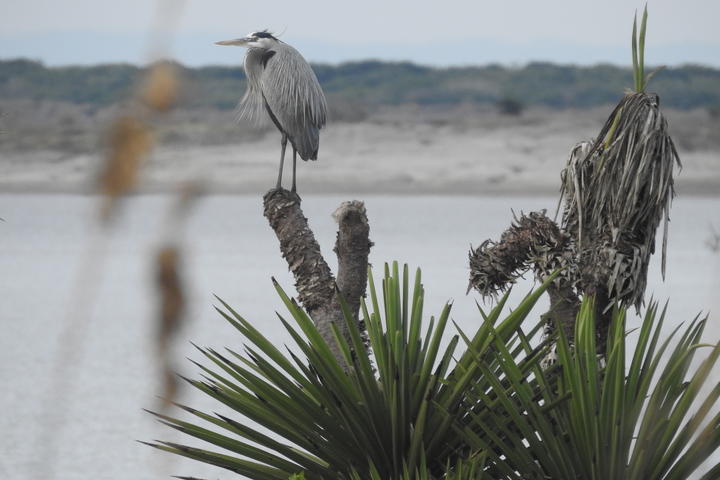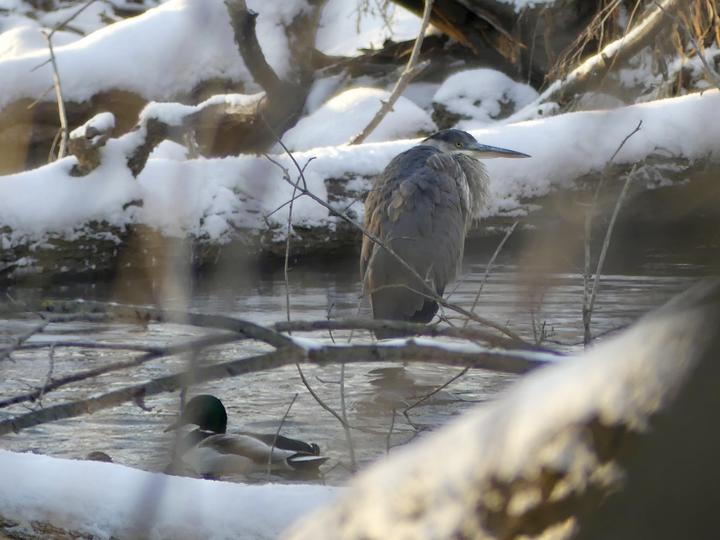More names for this bird
Anishinaabemowin: Zhashagi
Dakota: Hoḳa (heron)
The Dakota and Anishinaabe were among the earliest people to name Minnesota’s plants and animals, as well as to understand them in relation to Minnesota’s climate and seasons. Those original names are still in use, and several are included on the Season Watch website.
Latin (or scientific name): Ardea herodias
The scientific community has a convention of assigning agreed-upon Latin names to every kind of organism. Using scientific names helps people communicate confidently about the same organism and organize lifeforms based on how closely related they are.
Page contents
About the great blue heron
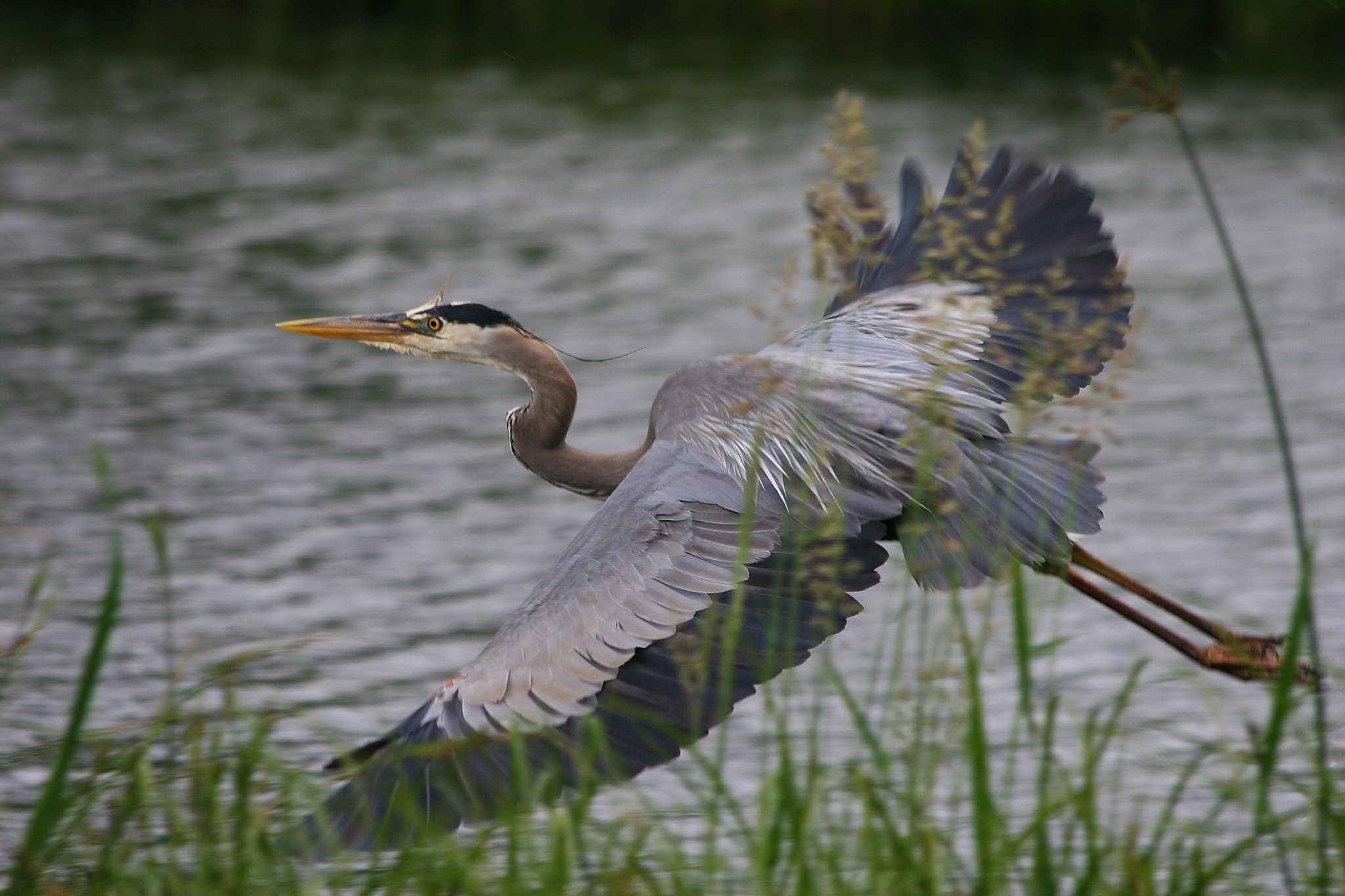
Photo © pserani01, some rights reserved (CC-BY-NC)
iNaturalist observation
About the great blue heron
- To recognize this bird in flight, look for the distinctive “S” shape of their neck and long legs trailing behind them.
- Great blue herons hunt by standing very still in shallow water waiting for fish or amphibians to swim by. They rapidly strike using their long neck and sharp bill to catch prey.
- In Minnesota, great blue herons typically lay just one clutch of three to five eggs in early spring. Both parents will incubate the eggs until they hatch after twenty-five to thirty days.
- Fun Fact: Herons nest in large colonies, sometimes consisting of 500 or more individual nests! Multiple large nests may be built in a single tree.
- Great blue herons migrate. Expand the "Migration animation" section below to learn more.
Migration animation
Migration animation
Click the full-frame icon (lower right corner of video) to play at full size.
More about eBird's abundance animations
eBird data from 2006-2020. Estimated for 2020. Fink, D., T. Auer, A. Johnston, M. Strimas-Mackey, O. Robinson, S. Ligocki, W. Hochachka, L. Jaromczyk, C. Wood, I. Davies, M. Iliff, L. Seitz. 2021. eBird Status and Trends, Data Version: 2020; Released: 2021. Cornell Lab of Ornithology, Ithaca, New York. https://doi.org/10.2173/ebirdst.2020
Visual guide to phenology
Watch for changes in great blue herons' presence (or absence), abundance, and behaviors at different times of year. Also, pay attention to when young-of-year appear and develop.
Note to observers
This page explains general clues to watch for when observing great blue heron phenology. However, this page does not explain how to identify this bird or collect data in a standardized way.
- For help with identification, see The Cornell Lab's All About Birds.
- For guidance on collecting data, see Nature’s Notebook.
Graphs and historical data
Note: The Orientation Center provides a map, as well as information on reading graphs; interpreting summary statistics, who collected the data and how; and how to download datasets for independent exploration.
First seen
- Earliest: March 19 (occurred in 2001)
- Average: March 30
- Latest: April 8 (occurred in 2014)
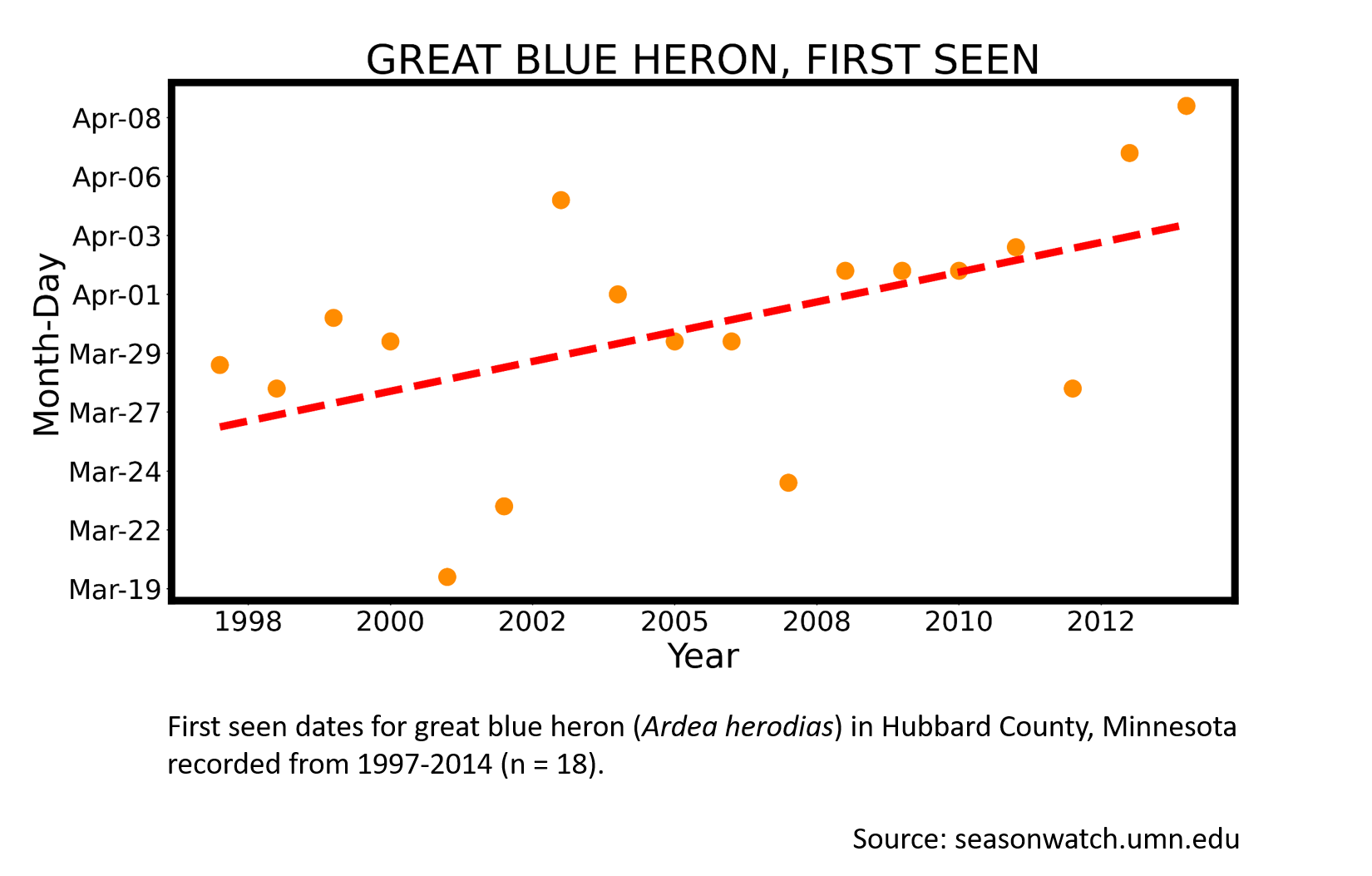
Arrival
- Earliest: March 2 (occurred in 1992)
- Average: March 23
- Latest: April 8 (occurred in 2003)
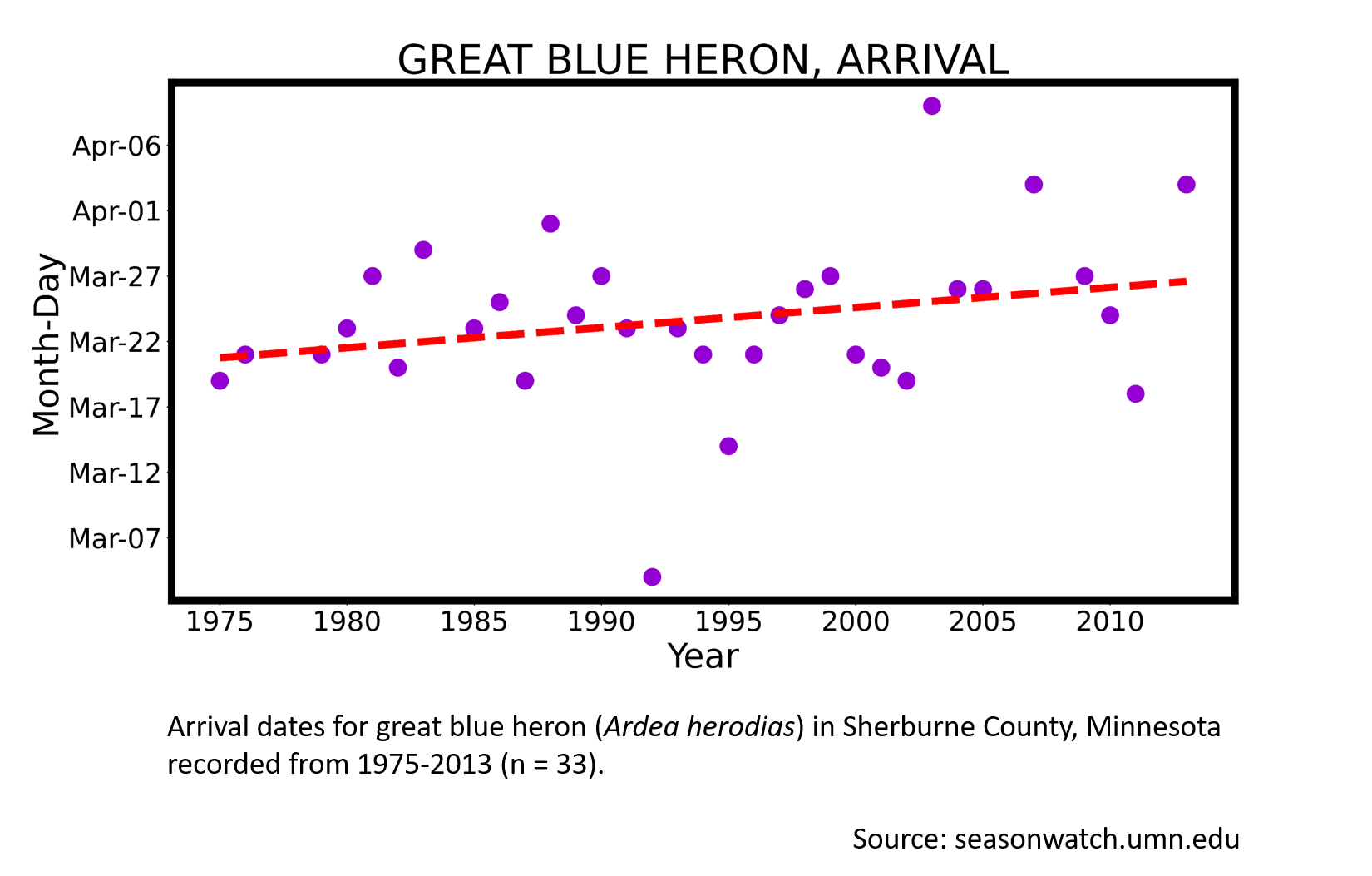
More resources
Keep exploring Season Watch
Keep exploring Season Watch
Co-author: Audrey Negro, Minnesota Master Naturalist
